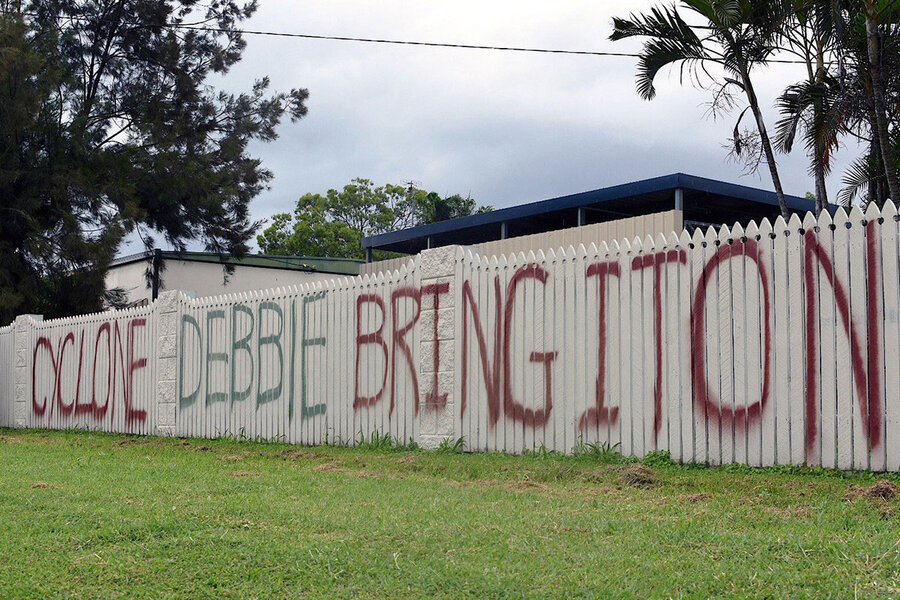Cyclone Debbie prompts thousands of evacuations in northeast Australia
Loading...
Authorities are urging 30,000 people to evacuate Australia’s tropical northeast coast as the strongest cyclone to hit the Queensland state in six years bears down on the sparsely populated farming region.
Cyclone Debbie is expected to intensify to a Category 4 storm before it makes landfall on Tuesday, bringing wind gusts up to 160 miles per hour, and a tidal surge of up to 13 feet to low-lying coastal regions.
In a news briefing on Monday afternoon, Police Commissioner Ian Stewart urged people in these areas to drive to higher ground as far south as Rockhampton.
“Don’t wait until tomorrow because you will not be able to move probably past midnight tonight,” he said, according to The Guardian.
Emergency services would do everything they could to assist locals, he added. But he asked people to take care of their neighbors and help each other out.
“That’s the Queensland [and] Australian way,” he said.
On Monday, the cyclone was churning over the Pacific Ocean as a Category 3 storm, with wind gusts up to 100 m.p.h. But Debbie was expected to gain steam before it landed just south of Bowen around 9 a.m. on Tuesday, about 45 minutes before high tide. The cyclone was tracking further south than previously expected, and could impact as much as 60 miles of coastline.
A Category 4 storm, one below the most dangerous wind-speed level, Debbie is expected to be the worst in the region since Yasi in 2011. The evacuation of the region, about 25,000 people in parts of the city of Mackay, would be the biggest in Australia since cyclone Tracy struck the northern city of Darwin in 1974.
Thousands had already fled south for higher ground. Shelters for up to 700 people were also open in Bowen and Proserpine, and buses were transporting people from towns further north to Cairns.
But some instead opted to brave out the storm from their homes or local businesses. Television images showed residents in areas around Townsville, about 250 miles north of Mackay, boarding up homes and shops with plywood and laying sandbags as a barrier.
"We'll just give it a go and rally together," Cungulla resident Mike Kennedy told the Australian Broadcasting Corporation.
But Queensland Premier Annastacia Palaszczuk urged people who haven’t left yet to do so, as older homes could not withstand a Category 4 storm.
"This window of opportunity to leave is drastically closing," Ms. Palaszczuk told reporters. "I am just pleading to everyone, please, listen to authorities. I do, you must as well. This is about your safety, it is about the safety of your family and the safety of your children."
The cyclone is expected to miss most of the region’s coal mines, and no major dry-bulk vessels are in the storm’s path, according to Reuters. But there are fears the storm could bring heavy crop damage, even if it is expected to miss the largest growing regions in the state’s far north. Queensland produces some 95 percent of Australian bananas in addition to being a major producer of sugar, capsicum, tomatoes and rice. Bowen’s agricultural industry is worth about AUS$450 million (about US$112 million) a year, according to The Guardian.
But some in Bowen were ready for the storm, regardless of what it brought with it.
A fence there had been spray-painted with “Cyclone Debbie, bring it on. Bowen is.”
This report contains material from the Associated Press and Reuters.







